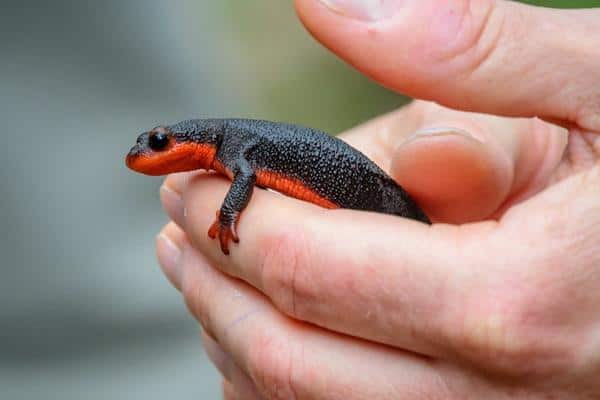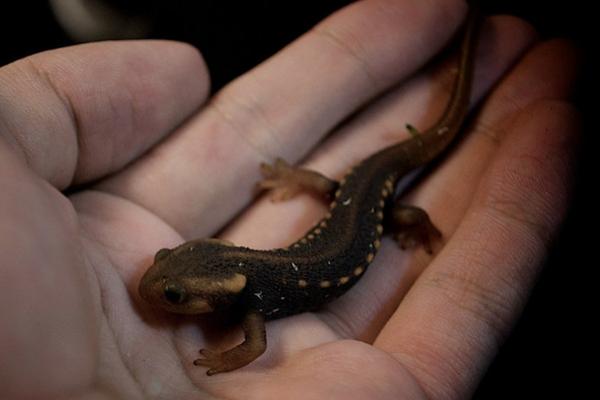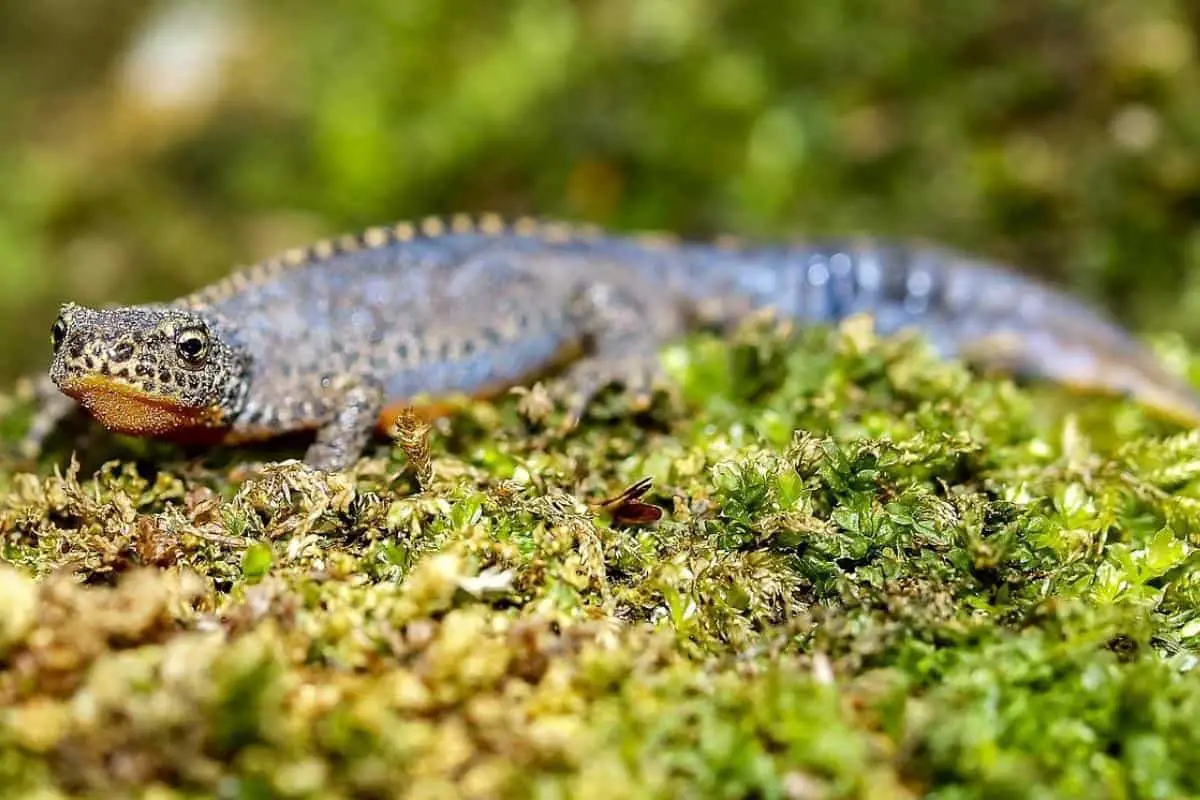One of the most common amphibians found throughout North America and around the globe are newts. These types of salamanders have several unique features allowing them to survive in tropical habitats.
Are Newts Poisonous to Touch?

All newts produce poison on their skin that deters predators and makes them poisonous to touch. Some species are more poisonous than others. While most newts are only poison to touch and not venomous, a few types are also venomous.
Poisonous Newt Skin
Even though newts have poisonous skin, most of them are not dangerous to touch unless you immediately touch your mouth or eyes. These amphibians are poisonous when eaten, and this is mainly a danger to other animals.
Touching newts means you will have the toxins of their skin on you, but because this poison needs to be ingested, it is not harmful this way.
However, you need to wash your hands immediately after handling a newt to be safe. These poison toxins are a layer of defense against predators since these amphibians don’t always have the best camouflage. If a newt is being attacked they may even try to make sure its main poison glands are near the predator. The skin of newts, in addition to being poisonous, is also warty and dry.
Venomous Newts

All newts are poisonous because of the toxins on their skin, but most of them are not venomous. A few types of newts have protruding ribs used for injecting venom. Even though this defensive movement pierces the newts’ skin, it doesn’t hurt them. Their skin does not take long to heal after this. Several species of crocodile newts are venomous, in addition to the Spanish ribbed newt.
Danger To Humans
For the most part, newts are not dangerous to humans. They just need to be handled carefully, and you should always wash your hands after. Venomous newts pose more of a threat because they can inject their venom when handled.
Poison from newts can irritate people’s eyes but is not fatal. However, eating, licking or otherwise ingesting their skin toxins can be deadly to both people and animals.
Danger To Pets
Newts pose more of a danger to animals who may pick them up in their mouths to try and eat them. This always makes them a threat to household pets who might run into these amphibians when outside. Newts have frequently been proven to be fatal to animals, so it is best to make sure your pets steer clear.
Most Poisonous Newts

Some newts are only mildly poisonous and don’t pose much of a threat, even to other animals. However, some are extremely poisonous. Types of extremely poisonous newts include the Emperor newt, California newt, rough-skinned newts, Sierra newts, and red-bellied newts.
Some of the most mildly poisonous types of newts include the smooth newt, marbled newt, great crested newt, and alpine newt. The red-spotted newt is considered quite poisonous in its juvenile stage but only mildly poisonous when they reach adulthood.
Newt Bacteria
While all newts have poisonous skin, there is also a bacteria that needs to be worried about when handling these amphibians. They can carry salmonella which can be passed to people. This bacteria can lead to an infection in people called salmonellosis. It leads to cramps, fever, and diarrhea.
While this is usually a mild infection, in some cases it can turn severe. Washing your hands after handling these amphibians is the best way to keep salmonella away.
Safe Handling
It isn’t usually a good idea to handle newts, especially with your unclean hands, because of the fact that their skin is poisonous and delicate. You should wash your hands before and after handling any newts, and try to only do so when absolutely necessary. Make sure to be gentle when handling the amphibian, and keep it away from your mouth and eyes.
What Else To Know About Newts
In addition to understanding newts and the poison toxins of their skin, there are other interesting facts about these amphibians.
Newts Are Salamanders

Newts are actually a type of salamander. However, other salamanders have smooth skin while newts have rough skin. Like other salamanders, newts thrive in tropical environments and can also be found dwelling deep within caves.
Bright Colors

Most newts have bright colors that display to other animals that they are poisonous. This itself can deter predators, as many of them recognize this as a sign of danger in the animal kingdom.
They Need To Be Moist and Cool
Newts need to stay cool and moist, despite their skin usually feeling rough and dry. They will usually live close to areas with water so they can frequently cool themselves off. If newts get too dry they will die, just like other types of salamanders.
Humans Are A Danger To Newts
Even though newts are not a danger to people, people are a major threat to them. Certain types of salamanders are regularly hunted, and are now classified as endangered or threatened. Humans are also behind the destruction of newt native habitats.
Conclusion
While newts have poison toxins on their skin, this does not make them dangerous to people. This poison is only dangerous when ingested, so just touching a newt poses no harm as long as you wash your hands thoroughly after.




